Pignoccata, or Italian honey balls, are coated in syrup that makes them sweet and sticky. Almonds bring crunch, sprinkles add colour, and the taste is light enough to enjoy at Carnevale.
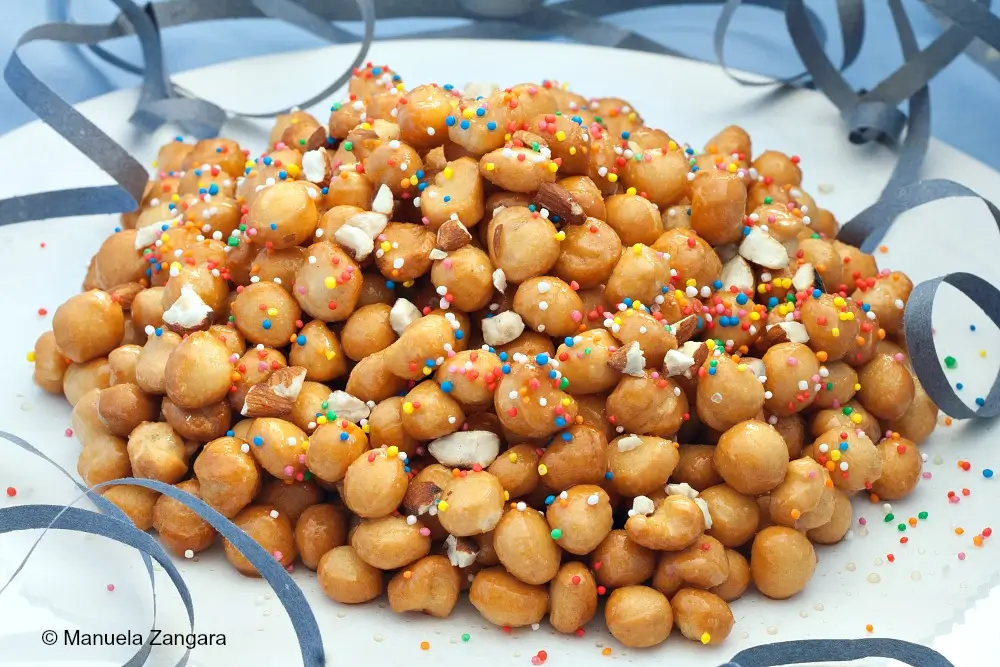
When I was growing up in Italy, Carnevale felt like magic. My friends and I dressed up, played tricks, and threw handfuls of coriandoli until our hair and pockets sparkled with colour. Then we would run home to find the table covered with my nonna’s sweets. Among all those treats, I always reached for the sticky little honey balls she had piled high into a cone.
Now I make Pignoccata here in Australia with my girls. They may be far from Italy, but they know this tradition by heart. Their favourite part is showering the warm golden mound with bright sprinkles, giggling as the honey sticks to their fingers. It is messy, sweet, and filled with joy. That is exactly how Carnevale should be.
What is Pignoccata?
Pignoccata is a Sicilian Carnevale sweet made of small fried dough balls coated in honey and shaped into a mound. Its name comes from pigna, the word for pine cone, because the shape looks a little like one. Decorated with almonds and sprinkles, it is colourful, sticky, and cheerful. This is a treat made to be shared at a crowded family table.
In English, pignoccata is often called Italian honey balls. The same phrase is also used for Struffoli, a similar Neapolitan sweet usually made at Christmas. Both recipes use fried dough and honey, but pignoccata belongs to Carnevale in Sicily, while Struffoli belongs to Naples and its festive season.
What Makes These Honey Balls Special
- A true part of Sicily’s Carnevale tradition that families continue to share across generations.
- Simple ingredients such as flour, eggs, and honey make the recipe approachable.
- The sweet can be made ahead and keeps well for several days when stored.
Key Ingredients for Italian Honey Balls
Honey
Brings sweetness and stickiness. It coats the fried dough balls and holds them together in a mound. A good quality honey gives a richer taste.
Orange Zest
A little zest brings freshness. It makes the dough lighter and balances the sweetness.
Almonds
Add crunch and texture. Toasted and crushed almonds give contrast to the soft dough balls and add a nutty flavour.
Find the complete list with measurements in the recipe card below.
How to Make Pignoccata (Italian Honey Balls)
Step 1: In the bowl of an electric mixer fitted with the hook attachment, put the flour, eggs, orange zest, and half the sugar. Knead well. Make it into a ball and let the dough rest for 20 minutes.
Step 2: Divide the dough into balls. Roll each ball of dough using your fingertips into ropes about 5 mm (less than ¼ inch) thick. Then cut the ropes of dough into 5 mm (less than ¼ inch) pieces. Remember, the smaller you cut them, the crunchier they will be at the end!
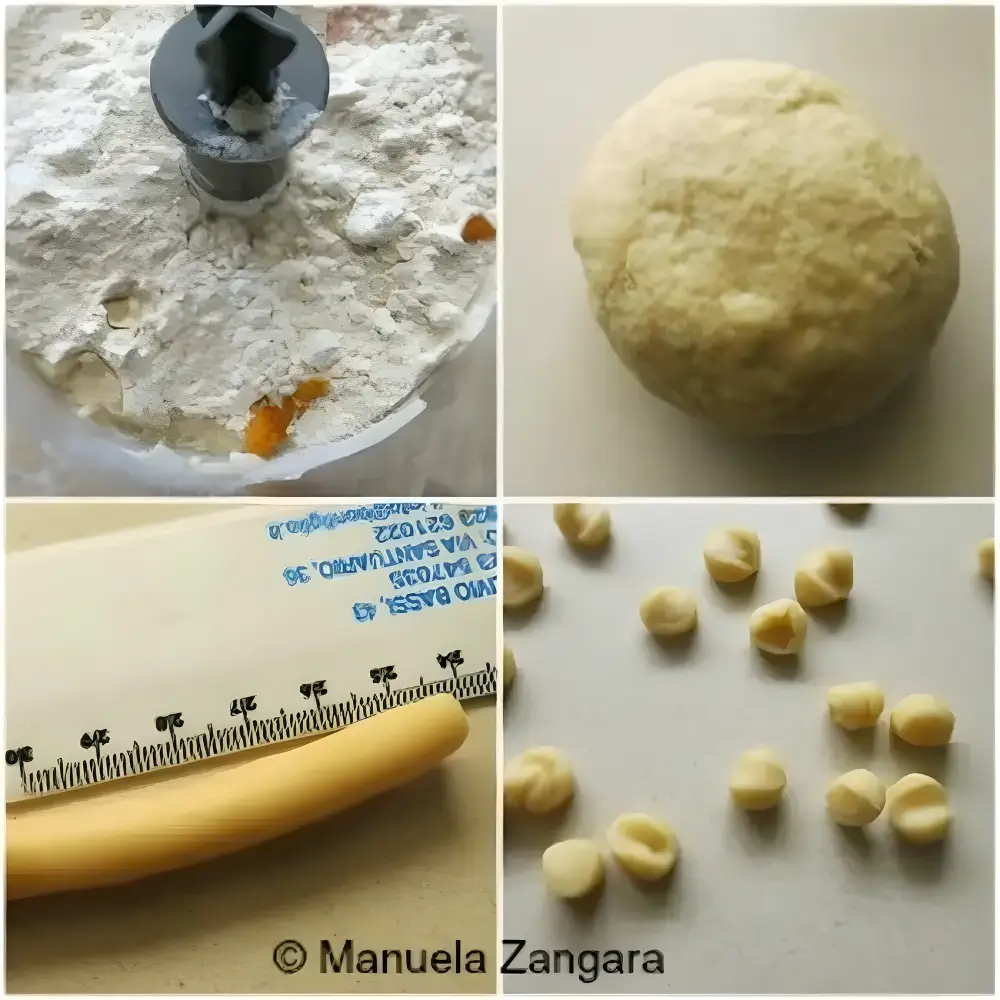
Step 3: Deep fry the little pieces of dough in hot vegetable oil (at 180°C – 355°F for the best result).
Step 4: When golden on all sides, remove them with a slotted spoon and put them on a plate covered with kitchen paper to drain the excess oil.
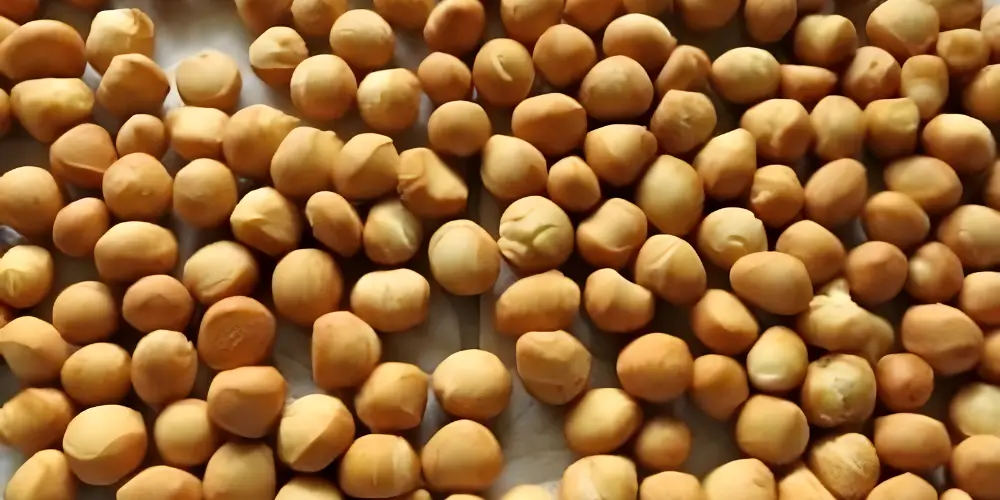
Step 5: In the meantime, prepare the syrup. Put the remaining sugar, honey, and water in a saucepan and melt them over the fire. Keep aside.
Step 6: When all the dough has been fried, add it to the syrup and mix well.
Step 7: Pour it on a plate and give it the shape of a pine cone (you can make a big one, or many smaller/individual ones). Sprinkle with the toasted almonds and sprinkles.
Step 8: Let it cool down and serve.
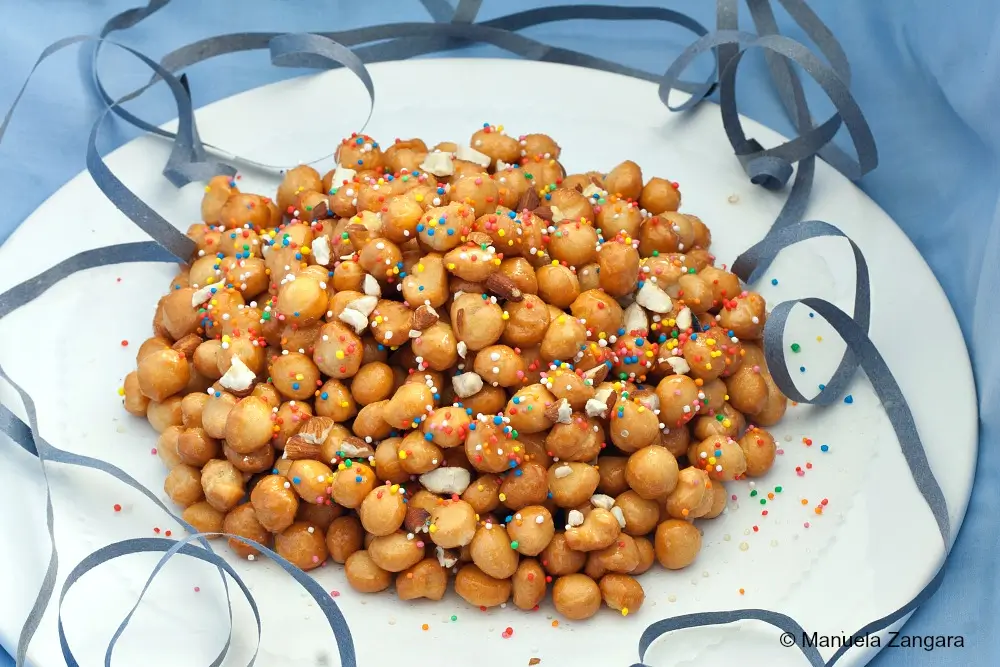
Frequently Asked Questions
The dough can be prepared a day in advance and kept in the fridge. Fry and coat with honey on the day you plan to serve for the best result.
A neutral oil with a high smoke point, such as vegetable or sunflower oil, gives the most consistent result.
Yes. Some recipes include a splash of liqueur in the dough, but it is not essential and can be left out.
Extra Help from the Kitchen
Keep the Oil Steady – Maintain the oil at 180°C – 355°F while frying. A steady temperature helps the pieces cook evenly and turn crisp and golden without absorbing excess oil.
Fry in Small Batches – Add only a few pieces at a time so the oil stays hot and the coating stays light. Overcrowding cools the oil and makes the pieces heavy and unevenly fried.
Drain Before Coating – Let the fried pieces rest on kitchen paper for a minute to remove extra oil. This keeps the honey glaze smooth and prevents it from turning greasy.
Warm the Honey Gently – Heat the honey only until it loosens and flows easily. If it boils, it thickens too quickly and hardens before coating evenly.
Variations and Twists
Change Up the Nuts – Almonds are traditional, but pistachios, hazelnuts, or pecans work well too. They bring their own flavour and crunch.
Add Vanilla to the Dough – A teaspoon of vanilla gives gentle warmth and a sweet aroma.
Make It Seasonal with Sprinkles – Use different colours to suit the occasion, such as black and orange for Halloween or red and green for Christmas.
Storage and Shelf Life
Pignoccata keeps well for 4-5 days when stored in an airtight container at room temperature. The honey coating helps preserve the texture, though the crunch of the dough balls softens after the first couple of days.
I would not freeze pignoccata, as the glaze turns grainy and the dough loses its lightness once thawed. If you want to prepare ahead, make the dough a day earlier, keep it covered in the fridge, and fry it fresh before coating with honey.
Serving Suggestions
Pignoccata often sits at the centre of the Carnevale table, golden and sticky with honey and scattered with sprinkles. Everyone gathers around and picks at it piece by piece, and it quickly becomes part of the celebration. I sometimes shape it into smaller clusters too, wrapping them in clear bags with ribbon, which makes a sweet gift for friends and neighbours.
I like serving it with a small cup of espresso after lunch or dinner, as the sweetness balances well with the coffee. It is also easy to bring along to family gatherings, and by changing the colours of the sprinkles, the same recipe can brighten up Halloween, Christmas, or even Easter.
More Carnevale Recipes to Try

Pignoccata (Italian Honey Balls)
Pignoccata, or Italian honey balls, are coated in syrup that makes them sweet and sticky. Almonds bring crunch, sprinkles add colour, and the taste is light enough to enjoy at Carnevale.
Ingredients
- 500 g – 4 cups plain flour
- 200 g – 1 cup sugar
- 5 eggs
- Zest of 1 orange – grated
- 100 g – ⅓ cup honey
- 50 ml – ¼ cup water
- 100 g – ¾ cup almonds – toasted and crushed
- Coloured sprinkles
- Vegetable oil – for deep-frying
Instructions
-
In the bowl of an electric mixer fitted with the hook attachment, put the flour, eggs, orange zest, and half the sugar. Knead well. Make it into a ball and let the dough rest for 20 minutes.
-
Divide the dough into balls. Roll each ball of dough using your fingertips into ropes about 5 mm (less than ¼ inch) thick. Then cut the ropes of dough into 5 mm (less than ¼ inch) pieces. Remember, the smaller you cut them, the crunchier they will be at the end!
-
Deep fry the little pieces of dough in hot vegetable oil (at 180°C – 355°F for the best result).
-
When golden on all sides, remove them with a slotted spoon and put them on a plate covered with kitchen paper to drain the excess oil.
-
In the meantime, prepare the syrup. Put the remaining sugar, honey, and water in a saucepan and melt them over the fire. Keep aside.
-
When all the dough has been fried, add it to the syrup and mix well.
-
Pour it on a plate and give it the shape of a pine cone (you can make a big one, or many smaller/individual ones). Sprinkle with the toasted almonds and sprinkles.
-
Let it cool down and serve.





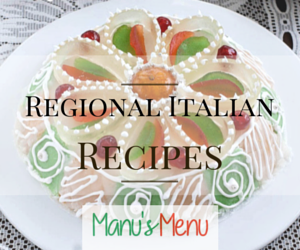

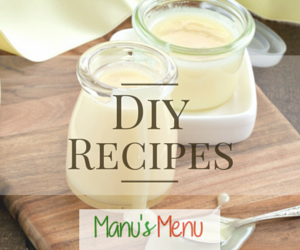
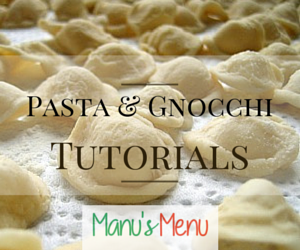

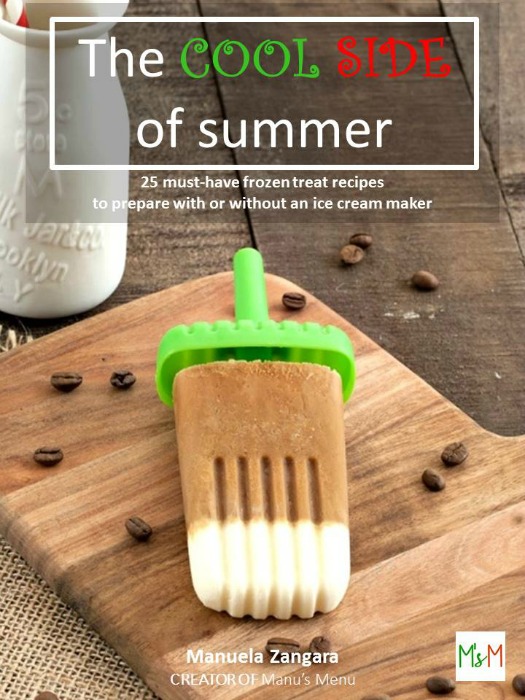
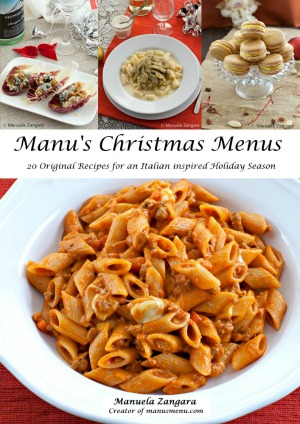






Leave a Reply